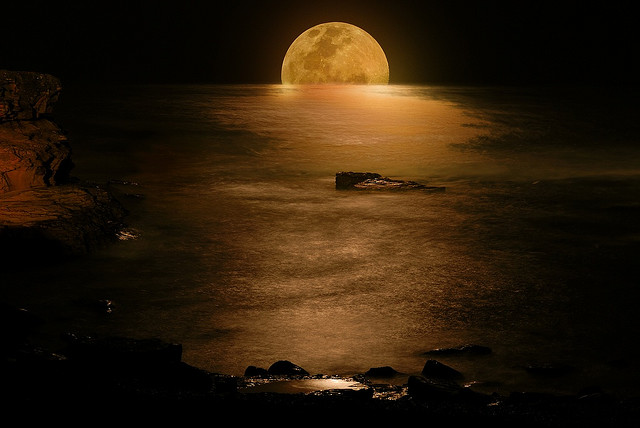
I am going to write something that may shock you, but:
There is no such thing as moonlight.
Think about it.
Moonlight is simply a reflection of sunlight on the moon’s surface. The moon emits no light of its own origin. Yet, people call it moonlight. Moonlight is a misnomer. It is a conceptual myth. For the moon gives nothing of itself when it shines, it only reflects a part of the sunlight it has received.
The phrase “moonlight” was a useful construct that we all developed and adopted a long time ago when we originally thought its name was an accurate description of the phenomenon whose inaccuracy has been soundly rejected by science, yet its misnomer persists. It is highly unlikely to be removed from our cultural lexicon and will propagate error for as long as humans exist.
According to the online etymology dictionary, the use of the phrase “moonlight” as a noun meaning “light of the moon” is began in the mid-14th century. It began is use in popular culture from Edward Lear when he wrote “And hand in hand, on the edge of the sand, They danced by the light of the moon, The moon, The moon. They danced by the light of the moon.” It is perhaps fitting that Edward Lear popularized the misnomer as Edward Lear (12 May 1812 – 29 January 1888) was an English artist, illustrator, author, and poet, renowned today primarily for his literary nonsense, in poetry and prose, and especially his limericks, a form that he popularised. It seemingly became most ensconced into our subconscious when Alfred Tennyson, the 1st Baron Tennyson wrote his famed poem The Lover’s Tale where he repeatedly featured the misnomer some 10 times.
So now, it persists. I suggest that nearly everyone over the age of 12 knows it is wrong, but we do nothing to correct it.
It is perhaps innocent and benign having no measurable impact on our lives and well-being. Maybe this is why it persists and endures.
What would happen if that were not so? What if it did matter? Would we stop it? Would we change?
I suggest that to a degree that we are presenting “moonlight” in the courtroom. Far too frequently, we allow into the courtroom as competent, substantive evidence that forms the basis of guilt non-validated techniques. When, if ever, are we going to stop it. When are we going to let the sunshine in?


